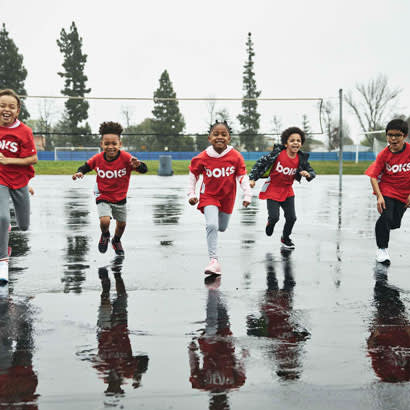
When you hear the word “healthy,” what do you think of? Maybe you imagine broccoli or push-ups, running or spinach. But do you think about your mind? The truth is, overall health includes both body and mind, and we can’t be truly healthy unless we’re taking care of our thought patterns and mental wellness.
What is Mindfulness?
Mindfulness is the practice of focusing on what you’re sensing and feeling in the present moment, without passing any judgment or allowing interruptions. Its practice has rapidly gained popularity after a barrage of studies show that mindfulness can reduce anxiety, stress, and symptoms of depression[1]. But does it work for everyone?
The answer is, YES! From children to elders, mindfulness has been proven to change the way the brain functions. It impacts the areas of the brain that control learning and memory, regulation of emotions, and the ability to understand different perspectives[2]. Children who have been exposed to trauma or significant life challenges stand to benefit from this practice even more, as mindfulness can have a particularly positive impact on developing brains.
Perhaps the best news is that this practice does not require a significant time investment. Just a few minutes a day is all it takes to start to feel the positive impacts of mindfulness. As an added bonus, this is something that can be done independently or in a group — families may find that making mindfulness a daily routine can help bring a few minutes of calm to everyone’s life.
Examples of Mindfulness Activities
So, what exactly does mindfulness look like? While you might think of traditional meditation — sitting still with your eyes closed — that’s just one of many options you could choose to practice mindfulness. This practice can also be done while walking, lying down, inside or outside, and at any time of the day. Fortunately, BOKS, a free physical activity program for kids and families, has just launched a new Mindfulness & Movement Flows resource designed to take the planning out of mindfulness activities. Created by fitness instructors, this resource contains 25 short activities, ranging from 5 – 10 minutes in length, that all include a follow-along video. These activities are grouped into five categories:
- Breathing – Focus on controlling and adjusting your breath.
- Mindfulness Meditation – Tune into your surroundings and be aware of all that’s around you.
- Movement Flows – Practice different movements, focusing on your balance.
- Stretching – Be aware of your body and how different stretches impact different muscles.
- Gratitude – Let go of your emotions and stressors by focusing on what you’re grateful for.
To get the most out of your mindfulness activities, try taking them outside to your local park, backyard or neighborhood. Research indicates that mindfulness has a far superior impact when practiced in a natural environment, away from artificial noises and distractions[3]. The great outdoors provides natural mental stimulation, which decreases the likelihood of a wandering mind. This contributes to the goal of focusing on the present without letting intrusive thoughts interrupt and provides support to those who may be new to mindfulness.
Time to Jump into Mindfulness
Now that you understand the benefits of mindfulness and how simple it is to practice, why not give it a try? Head outside and allow yourself to focus on your breathing, your surroundings or your body. If you want additional guidance, sign up for BOKS here for free to download Mindfulness & Movement Flows and simply follow along with the videos.
When you’ve tried your first mindfulness exercise, come back and let us know how it made you feel! And remember, mindfulness is not a competition – practice at your own pace, and soon enough, your mental and physical health will thank you.
Shea Pease is the BOKS Northeast Regional Specialist, located in Boston, Massachusetts. Follow BOKS (@BOKSKids) on Facebook, Instagram, Twitter, and YouTube for more family-friendly resources.
[1] Mayo Clinic. (2020). Mindfulness exercises. Retrieved from https://www.mayoclinic.org/healthy-lifestyle/consumer-health/in-depth/mindfulness-exercises/art-20046356#:~:text=Mindfulness%20is%20a%20type%20of,mind%20and%20help%20reduce%20stress.
[2] Hozel, B., et al. (2011). Mindfulness practice leads to increases in regional brain gray matter density. Psychiatry Research: Neuroimaging, 191(1), 36-43. Retrieved from https://www.sciencedirect.com/science/article/abs/pii/S092549271000288X
[3] Djernis, D., et al. (2019). A Systematic Review and Meta-Analysis of Nature-Based Mindfulness: Effects of Moving Mindfulness Training into an Outdoor Natural Setting. International Journal of Environmental Research and Public Health, 16(17), 3202. Retrieved from https://www.mdpi.com/1660-4601/16/17/3202/htm

